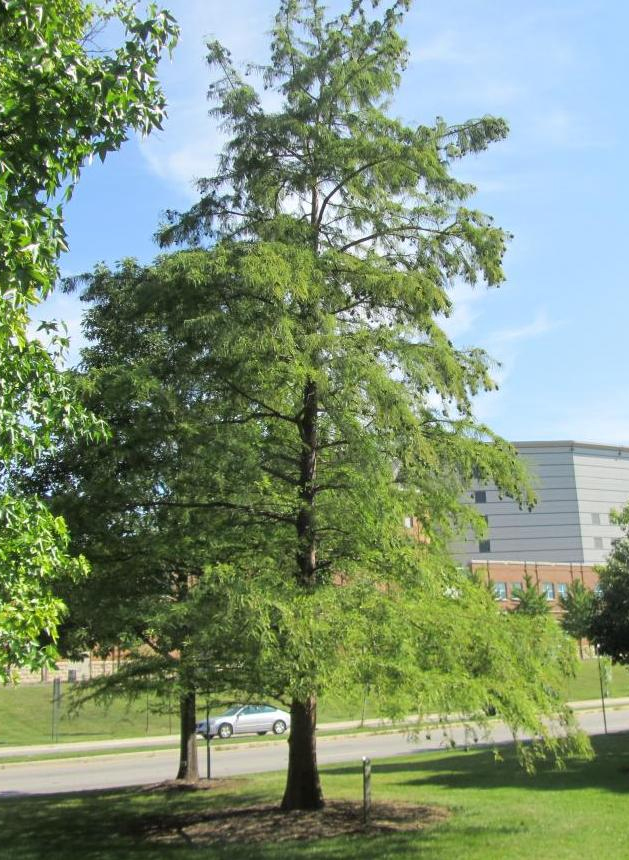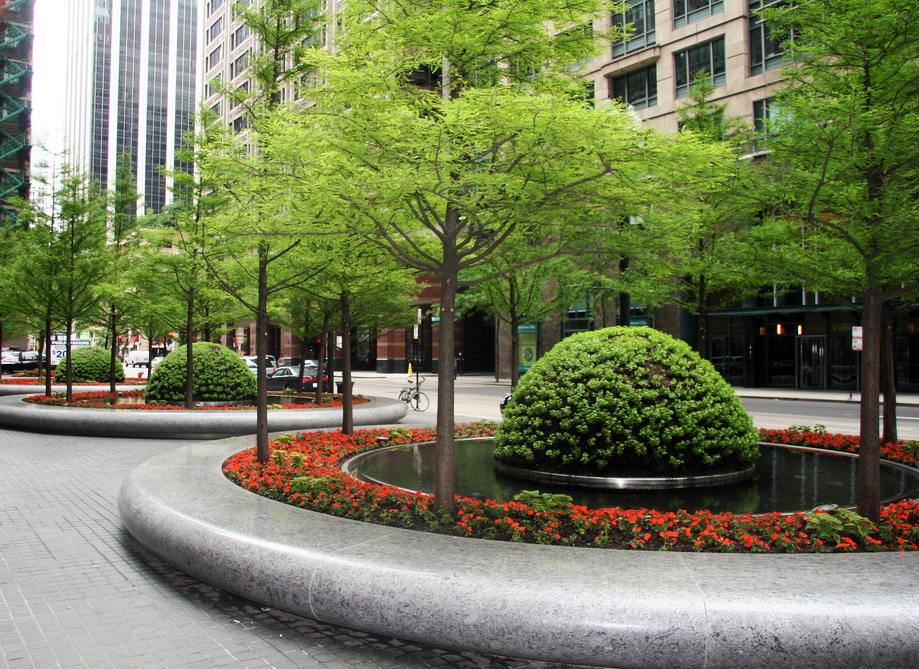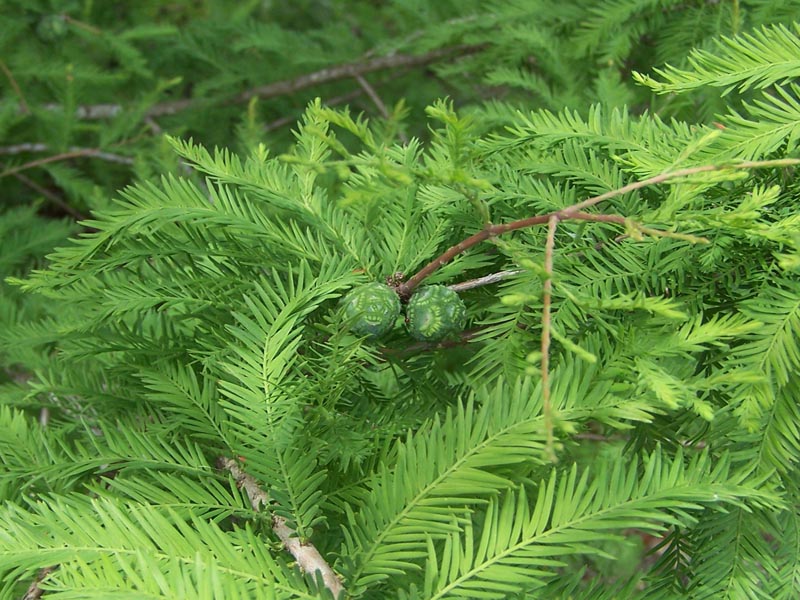One of my favorite trees is Taxodium distichum, or Baldcypress (also Bald Cypress). Once you recognize it, it’s always a delight to see. Baldcypress has the rare distinction of being a stand-out tree in virtually any type of setting or application. Alone or in groups, in formal or naturalistic settings, urban or wild, Baldcypress often becomes the focal point of a well-thought-out planting design. Part of that distinction arises from the fact that it has yet to have been overplanted – at least in Chicagoland-area landscapes – and is often greeted with delightful curiosity by the uninitiated.
While such a versatile tree, there are limitations to Baldcypress’s use given its eventual size and habit. Growing 50’-70’ by 20’-30’ wide, Baldcypress takes on a mostly pyramidal shape. While tall, it may not perform as a traditional shade/canopy tree for many years, if at all. Although the northernmost portion of Baldcypress’s native range is technically southern Illinois, the tree does quite well in northern Illinois and southern Wisconsin. Baldcypress does well in wet, dry, and well-drained soil conditions and is relatively salt-tolerant.
Leaves in springtime are a bright yellow-green and eventually turn a medium sage green come summer. The leaves turn orange-brown in autumn and hold for a while before dropping as winter approaches. Interestingly, Baldcypress (along with its cousin Dawn Redwood, also hardy in this area) is one of only a few varieties of cone-bearing trees that lose its leaves in the winter. Seeing the small ½” – 1” cones Baldcypress produces adds to the surprising nature of the tree. The reddish-brown bark with a fibrous nature can be striking in winter.
Famed modernist landscape architects such as Dan Kiley and Peter Walker used Baldcypress in formal, urban settings (see Fountain Place in Dallas and water features outside UBS Tower in Chicago – see picture). Locally, the Heritage Garden at the Chicago Botanic Garden features a pruned baldcypress hedge, now several decades old. Such formal cues can be also adapted to residential settings, as well as using Baldcypress as a standalone specimen tree or loose grouping. With such versatility, Baldcypress might be the “problem solving” tree for your landscape.



Written by Ken Horinko, ASLA
Landscape Architect
